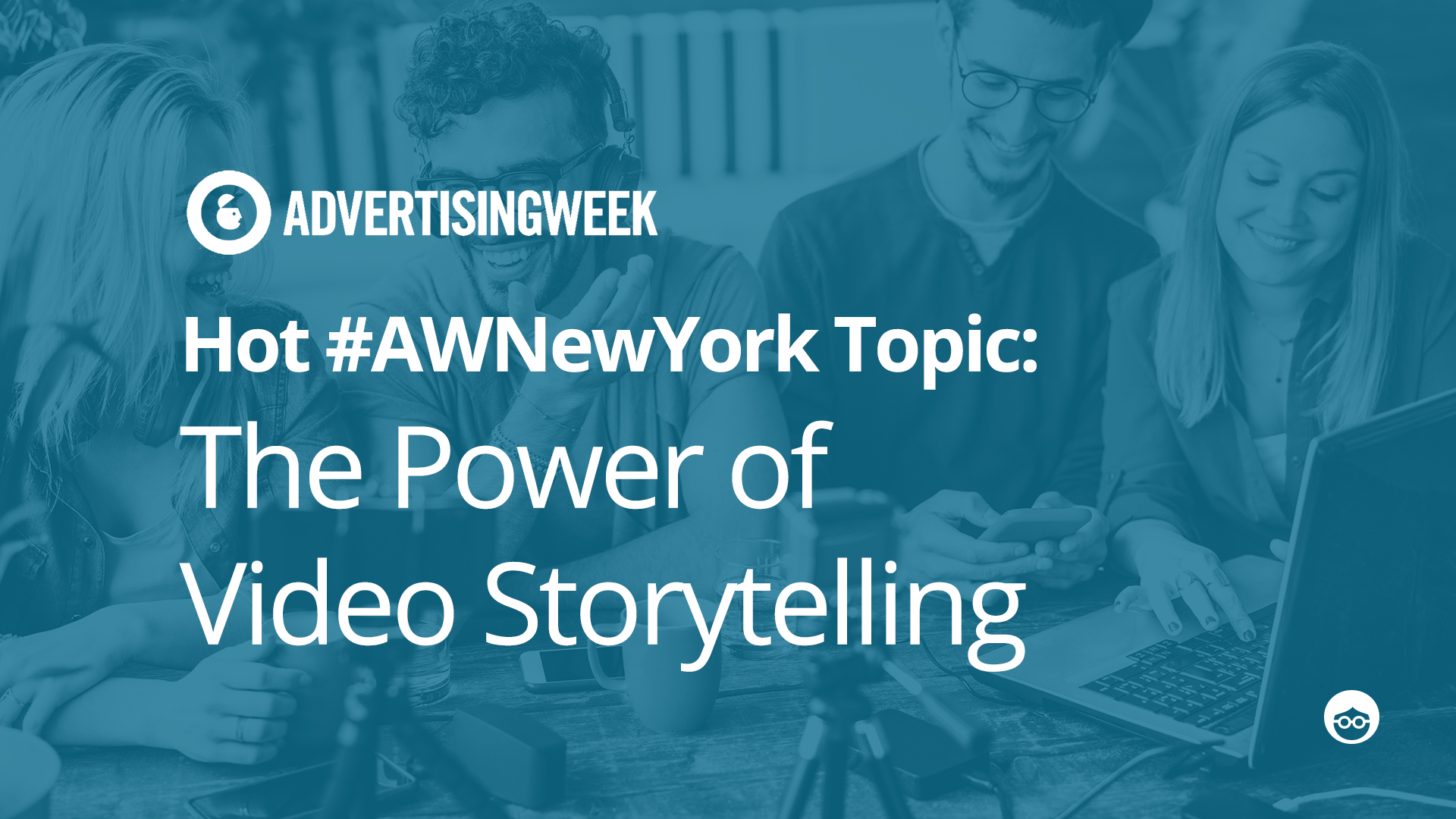3 Principles of Video Storytelling: Advertising Week NY 2019

Diving into Advertising Week New York can feel a little overwhelming — there are countless selections of seminars ranging from dating-innovator Bumble to the volatile 2020 election.
However, one theme that remained constant throughout was the emphasis on Video.
With attention spans getting shorter and the hunger for entertainment getting greater, all of the sessions agreed that marketers must find a way to efficiently and effectively connect with their audiences. And the best way to do so is through Video Storytelling.
What is Video Storytelling?
The days of watching infomercials with cheesy actors or poorly digitized cartoons are (thankfully!) almost over.
Telling consumers why you’re great no longer works — you have to show them you’re great.
And that’s where Video Storytelling comes in. A video is merely an asset, but by backing it with storytelling, you’re looking to evoke emotion by capturing the consumers’ attention, drawing them in, and leaving a longer-lasting impression where they can discover how great you are.
Standout brands have been doing this for years, though the shift of consumer behaviors — from almost forcibly engaging with TV commercials to streaming on commercial-less connected devices while simultaneously mobile-browsing — has led them to want, or expect, more engaging and relevant ads that can both inform and entertain.
Consumers are willing to give up their time to interact with a video, or ad in general, in exchange for an incentive such as free content, so long as it’s applicable to them. Even more, there’s a deeper desire for consumers to feel connected to a brand and its message.
The tricky part is, this storytelling must be done in a video format that is attractive, meaningful, clear, and generally under 30 seconds.
The Video Storytelling Basics
There are three basic principles that are imperative when it comes to Video Storytelling:
- Interesting Creative
- Relevant, Audience-Specific Messaging
- Clear Purpose
#1 Interesting Creative
In a session called “Why Video Matters: Building Your Creative Strategy for Mobile,” Rebecca Kortenius, NA Business Education Partner at Facebook, focused on the importance of creativity in video ads and how it can make or break your campaign.
According to Nielson, “56% of the brand’s sales lift can be attributed to the quality of the creative.” Even if the message is concise and audience-specific, you won’t see the results you want without exceptional creative execution.
One thing that Kortenius wanted everyone to take away from her session was that “if you have the best media plan in the world, but you have poor creative in those campaigns, it will still not perform.”
Sadie Thoma, Director of US Creative Partnerships at Google, added that marketers need to hit consumers hard out of the gate so that they don’t skip your ad, honing in on the creative within the first few seconds in order to captivate the consumer.
#2 Relevant, Audience-Specific Messaging
Reliability is key, discussed strongly during the influencer marketing-specific sessions with discussions on how Millenials and Gen Zs are inspiring a trend to trust everyday people over celebrities in high-gloss video campaigns.
Highlighting people that are relatable to the target market in your storytelling efforts creates more of an emotional effect on the consumer than someone they don’t feel similar to.
Panelists from the “Sparks, Signals, Stories: What work that works looks like on Youtube” session harped on the importance of knowing your audience and specifically messaging to them in a way they are receptive to.
In that same session, the “Youtube Works Awards” were held, with audience knowledge mentioned as vital to the success of the award-recipients standing out amongst the millions of hours of video content across the open web.
One of the three winners, Lyle Underkoffler, VP of Digital at Samsung Electronics America, said that “66% of Gen Zers skip online ads while 98% of them are online.” The only way to grab their attention is to speak to them directly using verbiage, situations, settings, and people who they can personally relate to.
#3 Clear Purpose
Have you ever watched a two-minute video and wondered, “what brand was that for?” or, “what does that even have to do with the brand?” You’re not alone.
Marketers often leave consumers feeling confused about the brands’ purpose or wondering why they just wasted their time.
Evoking emotion and having an aesthetically pleasing video is vital to engaging audiences, but without a clear message and purpose, what’s the point? Having a strong message leading to a specific goal leaves both the brand and the consumer more satisfied. And being that we are living in such a fast-moving (almost impatient!) world, marketers should get to the point while they have the viewers in front of them.
Rebecca Kortenius mentioned that on social channels, videos starting and ending with branding tended to perform better. She then added that there is an “89% chance of campaigns that emphasized the CTA to drive more conversions than those without emphasizing the CTA.”
Hitting the viewer with call-to-actions to improve the chance of conversion, while also reminding the consumer why they’re there, is imperative. As long as your audience is interacting and engaged with your video, they are more likely to join your cause.
Another hectic yet informative Advertising Week NY in the books with Video Storytelling at the forefront!
And hey, if you’re interested in getting your brand story out to the masses through non-intrusive, exclusive placements, be sure to check out our native video solutions, visit also our complete guide to online video advertising.


